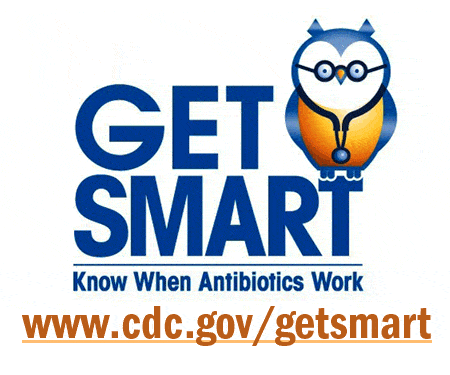November 21, 2014

For this year’s Get Smart About Antibiotics Week, we’ve collected new research, news, media and visualizations about antibiotic resistance from the last few months in a special roundup just about antibiotics.
Video and Media
CDDEP Director Ramanan Laxminarayan’s talk from the TEDMED 2014 conference was published online in November. The talk, entitled “The Coming Crisis in Antibiotics,” can be viewed at TED.com and on YouTube.
PBS Frontline aired a new documentary in October entitled “The Trouble With Antibiotics”, which focuses on antibiotic resistance and agricultural antibiotic use in the US. [PBS Frontline]
CDDEP Director Ramanan Laxminarayan participated in a TEDMED Great Challenges Google+ Live event earlier this year entitled Track, Treat, Prevent: A Better Battle Against Communicable Diseases. The panel conversation can be viewed online at TEDMED’s YouTube page.
Visualizations
CDDEP Visualization on key retail antibiotic consumption in the US and India shows data representing higher prices and lower consumption rates for the newest antibiotics. [CDDEP]
CDDEP visualization shows federal antibiotic legislation in the US in the last decade, comparing agricultural antibiotic use policy with human antibiotic use. [CDDEP]
Recent News from CDDEP Weekly Digests
Human Medical Antibiotic Use:
Hospitalization rates from C. difficile, a common digestive tract infection connected with antibiotic overuse, nearly doubled in the US between 2001 and 2010, according to a new study in the Journal of Infection Control. [Al Jazeera America]
Antibiotic use could be aiding the spread of salmonella in mice populations, found a recent study in the Proceedings of the National Academy of Sciences. [US News]
A study released in JAMA Internal Medicine found that doctors are more likely to over-prescribe antibiotics later in the day. The researchers attributed the trend to physician fatigue by late afternoon, when prescriptions were most common. [The Daily Telegraph]
Antibiotic use in infants before the age of two is correlated with a higher risk of obesity later in life, according to a study published in September. [CBS News]
According to a study published in Pediatrics, US doctors prescribe antibiotics for children with upper respiratory infections almost twice as often as is necessary, leading to around 11 million unneeded courses of antibiotics taken each year. [NPR]
Agricultural Antibiotic Use:
The market for antibiotic-free meat is growing, according to an investigation done by the Wall Street Journal. Consumer spending on antibiotic-free chicken is expected to pass $1.0 billion this year, as some meat producers take steps toward using fewer antibiotics and larger retailers like Wal-Mart have started selling antibiotic-free meat in stores. [The Wall Street Journal]
Cows, chickens and pigs aren’t the only animals being given antibiotics; a new study in the Journal of Hazardous Materials found the presence of several classes of antibiotics in both farm-raised and wild fish. [TIME]
US farms increased animal antibiotic use 16 percent between 2009 and 2012, according to a new report by the FDA. The report also stated that roughly 70 percent of those antibiotics used are medically important for humans. [The Atlantic]
Hospital sanitation and healthcare-acquired infections:
The majority of fatal allergic reactions in the US—up to 60%—are caused by drugs (and frequently antibiotics), according to a study published in the Journal of Allergy and Clinical Immunology. [The New York Times]
Handwashing with antibacterial soap exposes hospital workers to potentially unsafe levels of triclosan, according to a recent study. [Science Codex]
Antibiotic development:
Micreos, a Dutch biotech company, announced a new antibacterial therapy that could be an alternative to antibiotics. The drug, Staphefket, uses specific enzymes to kill bacteria by breaking down bacterial walls—a method that scientists expect to be less prone to resistance. [The Washington Post]
A new software program has identified over 3,000 molecules collected from human microbial DNA that could be developed into antibiotics. [The New York Times]
Novel treatments and tools:
A new and highly-effective treatment has been found for infections from C. difficile, the antibiotic-resistant bacteria widely known as “deadly diarrhea”, according to a study published in JAMA. The treatment, a pill capsule filled with frozen human feces that restores healthy gut bacteria, cured symptoms in 19 out of 20 patients within one week. [The New York Times]
An American epidemiologist has developed an analytic tool to help physicians and hospitals appropriately prescribe antibiotics. The product, called iAntibiogram, uses electronic medical records and tracks physician prescribing practices to give feedback on efficient antibiotic use. [Med City News]
Ionic liquids have been used to disrupt bacterial biofilms and deliver antibiotics through the skin a technique that could help in tackling antibiotic-resistant infections caused by biofilm bacteria. [Chemistry World]
Antibiotic Resistance Policy:
President Obama signed an Executive Order in September announcing a series of new actions combating antibiotic resistance on a federal level. Read more about the initiatives at the CDDEP blog, and view the announcement at the White House website.
Research News:
DRIVE-AB, a €9.4 million public-private consortium on antibiotic resistance, was launched in October. The project, which CDDEP researchers will be working on, focuses on a developing a standard of responsible antibiotic use and creating new economic models for the antibiotic development industry. [EurekAlert]
After a recent study revealed rampant overprescribing of antibiotics in Australia, the Australian Research Council approved a new grant in September for research on the implications of overprescribing. [Queensland Government]











